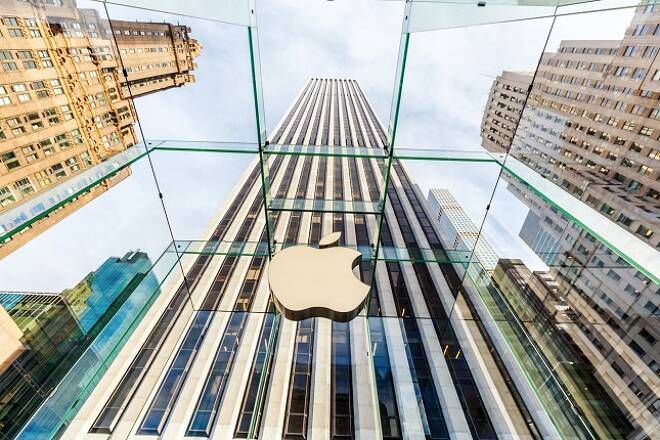Advertisement
Advertisement
U.S. Stocks Post Weekly Gain, Apple Valued at More than $1 Trillion
By:
Strength in the technology sector helped underpin the Dow. Apple rose 0.3 percent, adding to its market cap of more than $1 trillion. IBM also contributed to the Dow’s gains, rising more than 3 percent. Consumer staples were behind most of the S&P 500 Index’s gains. Traders bought Treasurys, driving down yields, as investors adjusted positions to reflect the possibility the Fed may ease its hawkish tone. Going into the report, a tightening labor market and healthy domestic demand have spurred worries of an overheating economy and continued interest rate increases by the Federal Reserve.
U.S. stock market investors took Friday’s mixed U.S. Non-Farm Payrolls report in stride, helping to post gains across the board in the three major stock indexes. Investors also seemed to shrug their shoulders at newly proposed tariffs on U.S. goods by China.
In the cash market, the benchmark S&P 500 Index settled at 2840.25, up 13.13 or +0.46%. The blue chip Dow Jones Industrial Average closed at 25462.58, up 136.42 or +0.54% and the tech-driven NASDAQ Composite finished at 7810.02, up 7.33 or +0.09%.
Strength in the technology sector helped underpin the Dow. Apple rose 0.3 percent, adding to its market cap of more than $1 trillion. IBM also contributed to the Dow’s gains, rising more than 3 percent. Consumer staples were behind most of the S&P 500 Index’s gains.
Investors remained resilient last week despite facing potential volatility from the Bank of Japan and U.S. Federal Reserve monetary policy announcements, additional tariff threats on China from the White House, retaliation on these threats by China and a slew of U.S. economic data including Friday’s jobs report.
Apple’s solid earnings report and its move above a trillion dollars in valuation seemed to stabilize not only the NASDAQ, but both the Dow and the S&P 500 Index. Remember at the start of the week, the major indices were under pressure after a steep loss in shares of Facebook during the week-ending July 27.
The three major indexes closed higher for the week, with the S&P 500 and NASDAQ rising 0.8 percent and 1 percent respectively. The Dow rose just 0.04 percent this week. The S&P 500 and Dow also posted their fifth straight weekly gain.
U.S. Treasury Markets
U.S. Treasury yields edged lower Friday after the U.S. government reported that payroll growth slowed in July and an announcement from the Chinese government that Beijing will impose tariffs on roughly $60 billion in U.S. goods.
Traders bought Treasurys, driving down yields, as investors adjusted positions to reflect the possibility the Fed may ease its hawkish tone. Going into the report, a tightening labor market and healthy domestic demand have spurred worries of an overheating economy and continued interest rate increases by the Federal Reserve.
The yield on the benchmark 10-year Treasury note was lower at around 2.952 percent, while the yield on the 30-year Treasury bond was also lower at 3.094 percent.
Earlier in the week, the Fed kept interest rates unchanged after a meeting this week, but market expectations for a rate hike in September are at 93.6 percent, according to the CME Group’s FedWatch tool.
About the Author
James Hyerczykauthor
James Hyerczyk is a U.S. based seasoned technical analyst and educator with over 40 years of experience in market analysis and trading, specializing in chart patterns and price movement. He is the author of two books on technical analysis and has a background in both futures and stock markets.
Latest news and analysis
Advertisement
